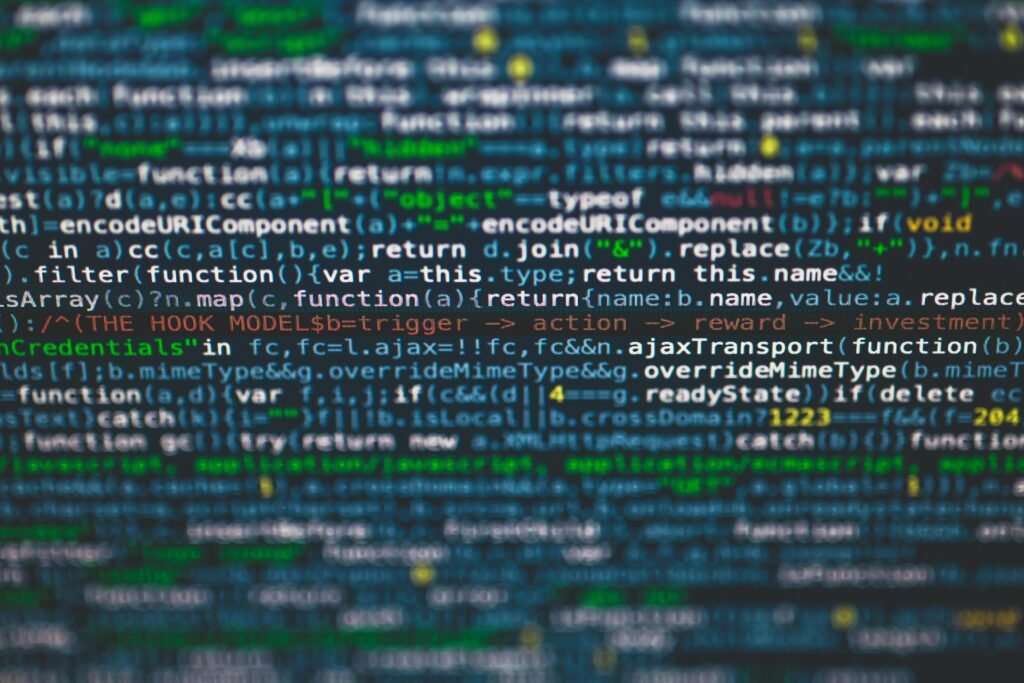
Introduction to Programming Languages
Programming languages are formal systems comprised of sets of instructions that allow humans to communicate with computers. These languages serve as the foundation of software development, enabling programmers to craft algorithms and instruct machines on how to execute specific tasks. The significance of programming languages in the modern technological landscape cannot be overstated, as they form the building blocks for creating everything from simple applications to complex operating systems.
At their core, programming languages act as a bridge between human logic and machine processes. They provide the syntax and semantics that dictate how commands are issued and understood by computers. Through programming languages, programmers can manipulate data, automate processes, and develop software solutions that cater to various needs and industries. Without programming languages, the advancement of technology as we know it would be severely hindered.
Programming languages can be classified into two main categories: low-level and high-level languages. Low-level programming languages, such as assembly language, offer a closer relationship to machine code, providing programmers with greater control over hardware resources. However, this increased control often comes at the cost of complexity, making low-level languages more challenging to learn and use. On the other hand, high-level programming languages, such as Python and Java, are designed to be more user-friendly. They abstract much of the hardware intricacies, allowing developers to write code that is more readable and maintainable. High-level languages prioritize ease of use, facilitating quicker development cycles and extensive community support.
In conclusion, understanding programming languages is essential for anyone looking to engage with technology on a deeper level. By leveraging both low-level and high-level languages, programmers can effectively instruct computers and drive innovation in various domains.
Types of Programming Languages
Programming languages can be categorized into several distinct types, each serving unique purposes and embodying specific paradigms. Understanding these types is crucial for aspiring programmers as it informs their choice of language based on the project’s needs and optimal implementation strategies.
One of the foundational categories is procedural programming languages. These languages, such as C and Pascal, focus on a sequence of instructions for the computer to follow. They are designed around the concept of procedure calls, where the program executes a series of routines or functions sequentially. This structure allows for clear, logical organization, making it easier for developers to understand and debug code.
Object-oriented programming languages are another prominent type, exemplified by languages such as Java and Python. They are based on the concept of “objects,” which can contain both data and methods. This paradigm promotes encapsulation, inheritance, and polymorphism, allowing for more reusable and modular code. Bridging real-world concepts with programming, object-oriented languages facilitate the development of complex software systems.
Functional programming languages, like Haskell and Scala, emphasize the evaluation of mathematical functions and avoid changing-state and mutable data. This paradigm fosters a declarative approach, where function application and composition are central themes. Functional languages are particularly well-suited for managing concurrent processes and simplifying code through concise expressions.
Lastly, scripting languages, such as JavaScript and Ruby, are designed for automating tasks and extending applications through scripts. They are usually interpreted rather than compiled, making them versatile for a variety of applications, from web development to automation utilities. The lightweight nature of scripting languages allows for rapid prototyping and easy integration with other languages.
Each type of programming language offers unique benefits and challenges, contributing to the diversity of tools available to developers. Understanding these differences is essential for effectively navigating the programming landscape.
Choosing the Right Programming Language for Beginners
Embarking on a journey to learn coding can be overwhelming, especially when faced with a multitude of programming languages. However, selecting the right programming language is crucial for beginners as it can greatly influence the ease of learning and success in illustrating complex concepts. It is important for aspiring coders to align their interests and goals with the strengths of each language.
One of the most recommended languages for beginners is Python. Known for its simplicity and readability, Python’s syntax is clear and straightforward, making it an ideal starting point for those new to coding. With applications ranging from web development to data analysis and artificial intelligence, learners can explore various programming concepts while developing functional projects. Moreover, the extensive libraries and frameworks available in Python further enhance its versatility and suitability for beginners.
JavaScript is another prominent language that offers a different perspective for those interested in web development. As the backbone of interactive web pages, JavaScript plays an essential role in frontend development. Beginners focusing on creating dynamic websites will find JavaScript particularly appealing. Additionally, with the advent of frameworks such as Node.js, the use of JavaScript has expanded to server-side development, allowing learners to adopt a full-stack approach.
For those drawn to simplicity and elegance, Ruby presents an engaging option. Renowned for its readable syntax, Ruby is particularly advantageous for developing web applications through the Ruby on Rails framework. This framework provides conventions that streamline the development process, enabling beginners to produce functional web applications with less code. Ultimately, the selection of a programming language should harmonize with personal goals, interests, and the contexts in which the language excels, enhancing the overall learning experience.
Essential Resources for Learning Coding
As the demand for programming skills continues to grow, numerous resources are available to assist individuals in their coding journey. This section outlines key resources that cater to various learning styles, ensuring that beginners can find something that resonates with their preferences.
Online courses have emerged as a popular choice for learning coding. Platforms such as Coursera, edX, and Udacity offer an array of courses covering different programming languages and concepts. These platforms provide structure through video lectures, quizzes, and assignments, allowing learners to progress at their own pace while also earning certificates from reputable institutions upon completion. Such certifications can be advantageous in the job market, validating the learner’s skills to potential employers.
Coding boot camps represent another viable option for those who prefer an immersive learning experience. Programs like Le Wagon, General Assembly, and Codecademy accelerate the learning process through intensive curricula designed to transition beginners into skilled programmers in a matter of weeks. These boot camps are not only about coding but also encompass industry-relevant practices, often including career support, networking opportunities, and real-world projects that bridge the gap between theory and application.
For learners who prefer traditional methodologies, exploring programming books is a beneficial path. Books such as “Automate the Boring Stuff with Python” and “Eloquent JavaScript” provide valuable insights into coding concepts while encouraging practical application through exercises and projects. Additionally, many readers find comfort in the structured nature of a book, which can be revisited at their convenience.
Lastly, engaging with community forums such as Stack Overflow and Reddit’s r/learnprogramming allows learners to interact with fellow coding enthusiasts. These forums are ideal for asking questions, sharing resources, and receiving feedback on coding problems, creating a supportive environment conducive to growth.
In conclusion, whether through online courses, coding boot camps, programming books, or community engagement, there are myriad resources available for individuals eager to learn coding. By leveraging these tools, aspiring programmers can navigate their educational journey more effectively.
Setting Up Your Coding Environment
Establishing a coding environment is a critical first step for anyone looking to learn programming. The environment serves as your workspace where you write, test, and debug your code. To begin, it is essential to choose a suitable text editor or Integrated Development Environment (IDE). There are numerous options available, each with varying features. Popular choices for beginners include Visual Studio Code, Sublime Text, and Atom, while more comprehensive IDEs like PyCharm or Eclipse are favored for their extensive functionalities.
Once you have selected your text editor or IDE, the next task is to install it on your computer. Most software options offer straightforward installation guidelines on their websites. After installation, familiarize yourself with the interface, as understanding how to navigate the environment will greatly enhance your coding experience. In addition, consider customizing your setup by installing specific plugins or extensions to improve productivity. For instance, code linters can help you maintain clean and error-free code, while theme plugins can personalize the appearance of your workspace.
Another essential tool to consider is version control software. Git is the most widely used system in the programming community and allows you to manage changes in your code over time. To integrate Git with your IDE or text editor, you may need to follow additional setup instructions, often detailed in the software documentation.
Also, it is advisable to install necessary libraries and frameworks based on the programming languages you wish to learn. For example, if you are starting with Python, you might consider installing libraries such as NumPy or Pandas. By ensuring you have the right tools and settings, you will create a conducive coding environment that promotes effective learning and development.
Basic Coding Concepts Every Beginner Should Know
As an aspiring programmer, understanding fundamental coding concepts is crucial for your development in the field. This section aims to provide a clear overview of key principles such as variables, data types, control structures, functions, and arrays, which collectively form the building blocks of programming.
Variables act as containers for storing data values. In programming, a variable is assigned a name and can hold different types of data over the course of an application. For example, in a programming language like Python, you might declare a variable to store a user’s age: age = 25. This flexibility allows programs to manipulate and manage information dynamically.
Next, data types are fundamental in determining the kind of data a variable can hold. Common data types include integers (whole numbers), floats (decimal numbers), and strings (text). Each programming language has specific syntax for declaring these types, for instance, Java uses int, double, and String to represent different data types.
Control structures enable decision-making within programming. The most common includes if statements, which allow programmers to execute specific blocks of code based on conditional expressions. For example: if (age >= 18) { // adult code }. Loops, such as for and while, facilitate repetitive tasks, enabling a set of instructions to run multiple times until a specified condition is met.
Functions serve as reusable pieces of code that can be executed whenever needed, enhancing modularity and maintainability. Functions can take arguments and return values, as illustrated: def add(a, b): return a + b. Lastly, arrays are collections of items stored under a single variable name, allowing for organized data management, such as fruits = [‘apple’, ‘banana’, ‘cherry’].
Understanding these fundamental coding concepts prepares beginners for more advanced programming topics, fostering a solid foundation for further learning and application in real-world scenarios.
Practicing Coding: Where to Start
Embarking on the journey to learn coding involves more than just understanding theoretical concepts; it requires consistent practice and application of skills. For beginners, the act of practicing coding is crucial as it reinforces what they have learned and builds confidence in their abilities. To effectively start coding, individuals can explore various coding challenges and projects that cater to different skill levels.
One popular platform for beginners is Codecademy, which offers interactive courses across multiple programming languages. Through hands-on exercises, learners can directly apply what they have learned in a supportive environment. Starting with such platforms can significantly lower the barrier to entry, making it easier for novices to grasp programming fundamentals.
Another excellent resource is LeetCode, which specializes in coding challenges that are commonly faced in technical interviews. These challenges range from easy to difficult, allowing learners to progress at their own pace. Actively solving problems on LeetCode not only solidifies coding concepts but also prepares aspiring developers for future job interviews.
HackerRank is yet another platform that offers coding challenges across various domains, including algorithms and data structures. It encourages healthy competition by featuring leaderboards and peer submissions, which can motivate beginners to improve their skills continuously. Moreover, participating in coding competitions on HackerRank can introduce beginners to the importance of reading and understanding problem statements effectively.
In summary, incorporating practice into a learning regimen is essential for anyone starting their coding journey. By leveraging platforms like Codecademy, LeetCode, and HackerRank, beginners can gain practical experience in coding, reinforcing their knowledge and preparing them for real-world applications. Consistent engagement with these resources will pave the way for more advanced programming skills and increased proficiency over time.
Common Coding Mistakes and How to Avoid Them
Learning to code is a rewarding endeavor, but beginners often encounter specific coding mistakes that can hinder their progress. Understanding these common pitfalls is essential for developing the necessary programming skills. One frequent mistake is misinterpreting error messages. Error codes can be cryptic, yet they provide vital clues about what went wrong. Instead of overlooking these messages, coders should take the time to decipher them and understand the underlying issues. Tutorials and online resources can assist in interpreting common errors, ultimately leading to more efficient debugging.
Debugging is another critical area where beginners struggle. Many novices often find themselves overwhelmed when they encounter bugs in their code. A systematic approach can make this process less daunting. Techniques such as print debugging, which involves displaying variable values at different points in the code, can help identify the source of errors. Using integrated development environments (IDEs) with built-in debugging tools can significantly simplify this process. Resources like community forums also offer invaluable support, enabling coders to gain insights from others’ experiences and solutions.
Furthermore, the importance of writing clean, readable code cannot be overstated. Beginners might be tempted to prioritize functionality over clarity, but this can lead to complications in the long run. Employing consistent naming conventions and writing concise comments can vastly improve code readability, making it easier not just for oneself, but also for others who may need to work with the code later. Clean code practices are crucial for maintaining and debugging code as projects grow in complexity.
As aspiring programmers navigate their coding journeys, being aware of these common mistakes and employing effective strategies to avoid them can significantly enhance their learning experience. This preparation will ultimately empower learners to troubleshoot their work, fortifying their coding skills for future challenges.
Building a Coding Portfolio
A coding portfolio serves as a vital tool for those seeking to enter the tech industry. It showcases not only a developer’s skills and expertise but also their ability to solve problems through coding. As you embark on the journey to create your coding portfolio, it is important to highlight a diverse range of projects that demonstrate your proficiency in various programming languages and frameworks.
When constructing your portfolio, consider including personal projects that ignite your passion and reflect your coding interests. These projects can illustrate your creativity and problem-solving abilities, which are highly valued in the tech world. Documenting the thought process behind each project, including challenges faced and how you overcame them, can provide deeper insight into your skills as a programmer. This narrative helps potential employers or collaborators understand not just what you have built, but also how you think.
It can be beneficial to include open-source contributions in your portfolio. By participating in open-source projects, you not only demonstrate your technical skills, but you also show your ability to collaborate with other developers. This involvement reflects your commitment to the coding community and your willingness to engage with real-world coding issues.
Additionally, utilize platforms such as GitHub to host your code and projects. A well-organized and visually appealing portfolio on GitHub can serve as a live demonstration of your programming skills. Providing thorough documentation and clear usage instructions for your projects can enhance their accessibility and ease of understanding for others.
Incorporating various types of projects, participating in collaborative work, and maintaining an organized repository are essential strategies in building an effective coding portfolio. By doing so, you will position yourself favorably in the competitive landscape of programming and coding careers.
Conclusion: Your Journey in Coding
Embarking on the journey to learn programming languages is an adventure that reshapes one’s approach to problem-solving and creativity. As we have explored throughout this blog post, understanding the various programming languages and their associated paradigms can significantly enhance your skills and capabilities as a programmer. Each language offers unique features and applications, making it crucial to identify your goals and interests to guide your learning path.
One key takeaway is the importance of choosing the right programming language that aligns with your objectives, whether you aim to develop web applications, engage in data analysis, or explore machine learning. Furthermore, familiarity with multiple languages can greatly expand your versatility and effectiveness in tackling diverse coding challenges. With a solid foundation, you can transition seamlessly from one programming language to another, enriching your development toolkit.
Moreover, cultivating a mindset geared toward experimentation is vital. The world of coding is dynamic and ever-evolving, making it essential to stay curious and open to continual learning. Through hands-on practice, including building projects and contributing to open-source communities, you can sharpen your skills and gain practical experience that goes beyond theoretical knowledge.
As you advance in your coding journey, remember that persistence and practice are key components to overcoming obstacles and achieving mastery. Embrace challenges as opportunities for growth, and do not hesitate to seek help from online resources or fellow programmers when needed. Coding is a collaborative endeavor, and engaging with others can provide valuable insights and support.
To conclude, the path of coding is one of continuous learning and adaptation. By remaining committed and passionate about mastering programming languages, you can unlock countless opportunities and pave the way for a successful and fulfilling career in technology.



